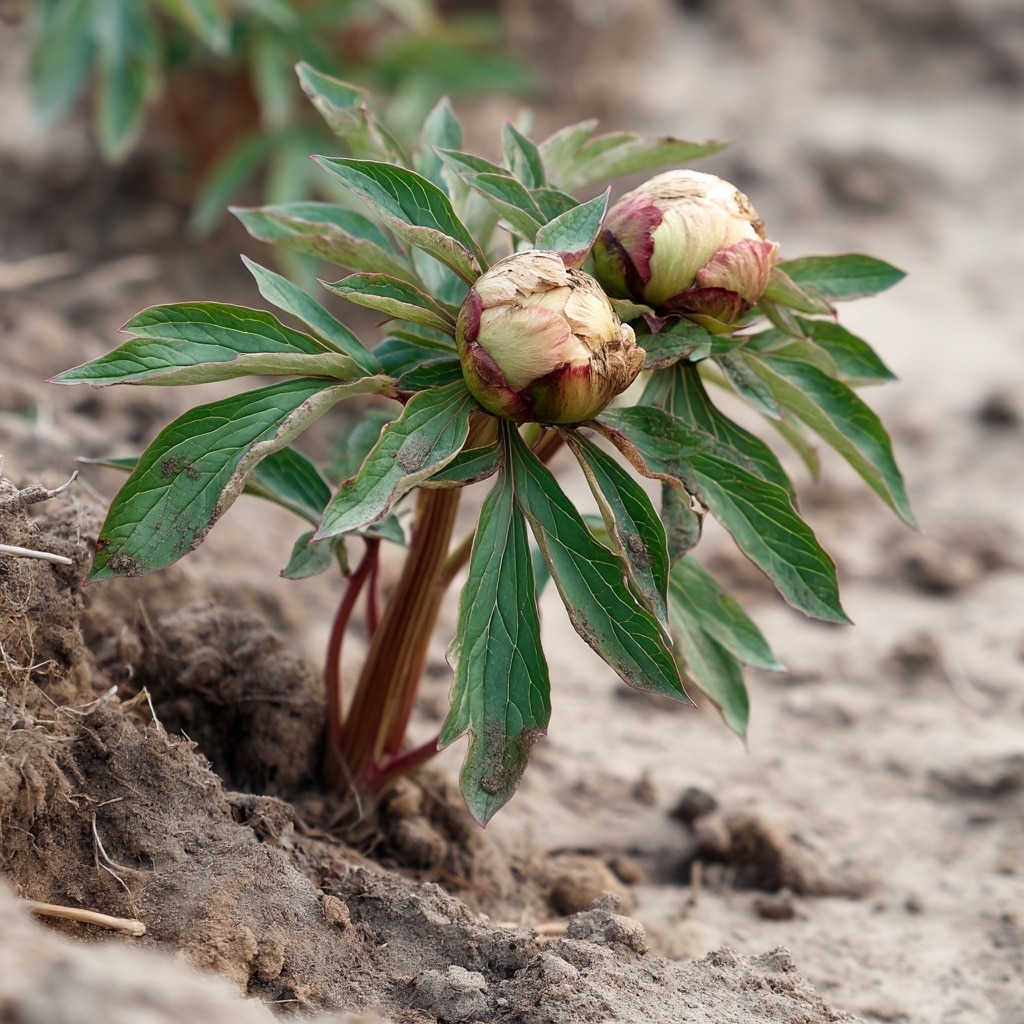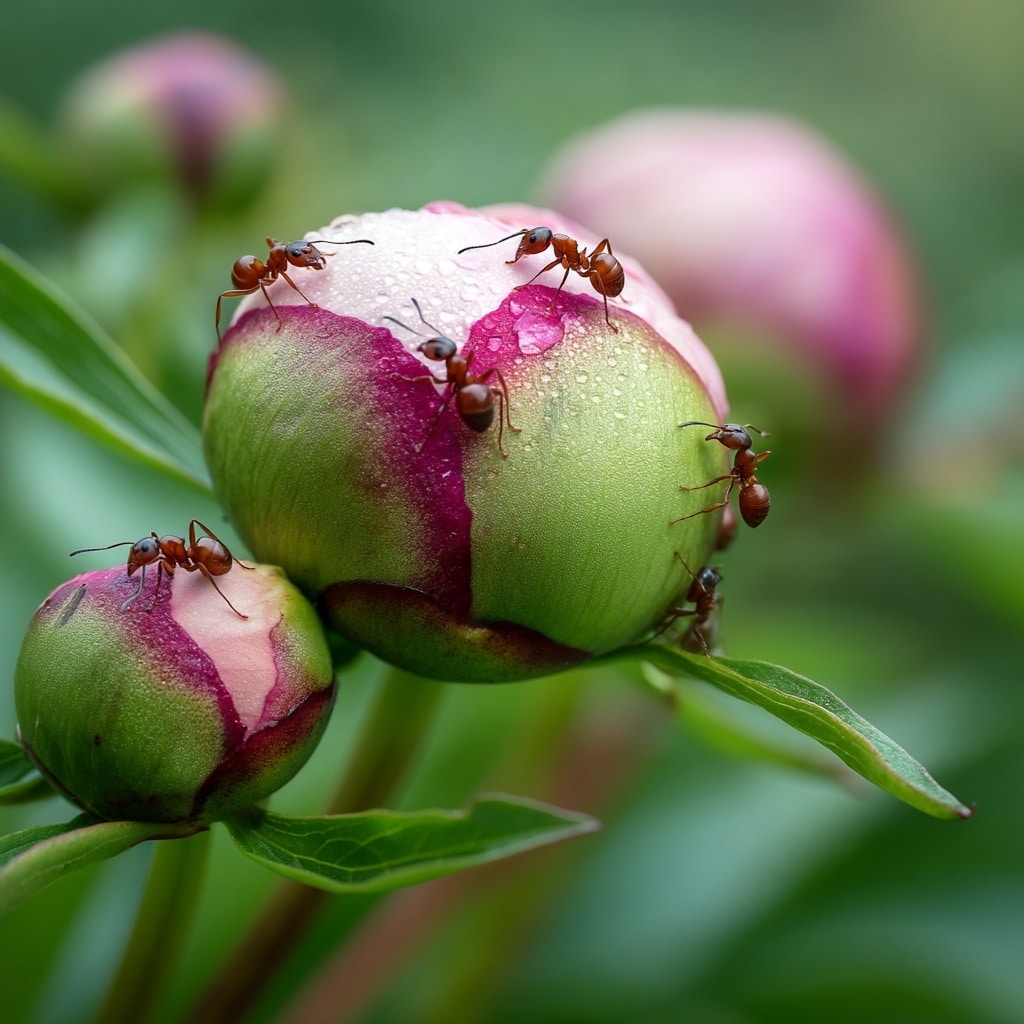Peonies are garden favorites for good reason—their lush, fragrant blooms are showstoppers every early summer. But when those buds don’t appear or suddenly stop opening, it can be frustrating, especially after waiting all year for the display. If your peonies aren’t blooming, don’t give up on them just yet.
Most bloom failures are caused by a handful of common mistakes, and the good news is they’re usually easy to fix. Whether the issue is planting depth, sunlight, or something else entirely, a little troubleshooting can bring your peonies back to life next season.
In this guide, we’ll walk through the seven most likely reasons your peonies aren’t blooming—and exactly what to do about each one.
Are ants responsible for peonies not blooming?
It’s a common belief that peonies need ants to open their buds—but that’s just a myth. Ants are often seen crawling on peony plants in late spring, leading many gardeners to assume they play a role in blooming. In reality, their presence has nothing to do with whether or not your peonies flower.
Peony buds produce a sweet substance called extrafloral nectar, which attracts ants. The ants are simply feeding on this nectar—not helping the buds to open. Your peonies will bloom with or without ants nearby.
So, if your plant didn’t produce flowers this year, don’t blame the ants. The real issue lies elsewhere, and in the next sections, we’ll break down the most likely causes and how you can correct them.
7 Reasons for Peonies Not Blooming
If your peonies are producing healthy foliage but no flowers, one or more of these seven issues could be the reason. Let’s go through each one so you can get your plants back on track.
1. Planted Too Deeply

One of the most common reasons peonies fail to bloom is being planted too deep. Unlike bulbs, which prefer to be buried, peonies need their growth buds—called “eyes”—to be just 1 inch below the soil surface.
If those buds are buried too far down, they won’t get the signal to form flower stalks. Instead, the plant will produce lush leaves but no blooms—often called a “blind” plant.
To correct this, carefully dig up the root crown in fall, replant with the eyes just beneath the surface, and avoid piling on heavy mulch. Proper planting depth is crucial to future flowering.
2. Fungal Diseases (Botrytis)
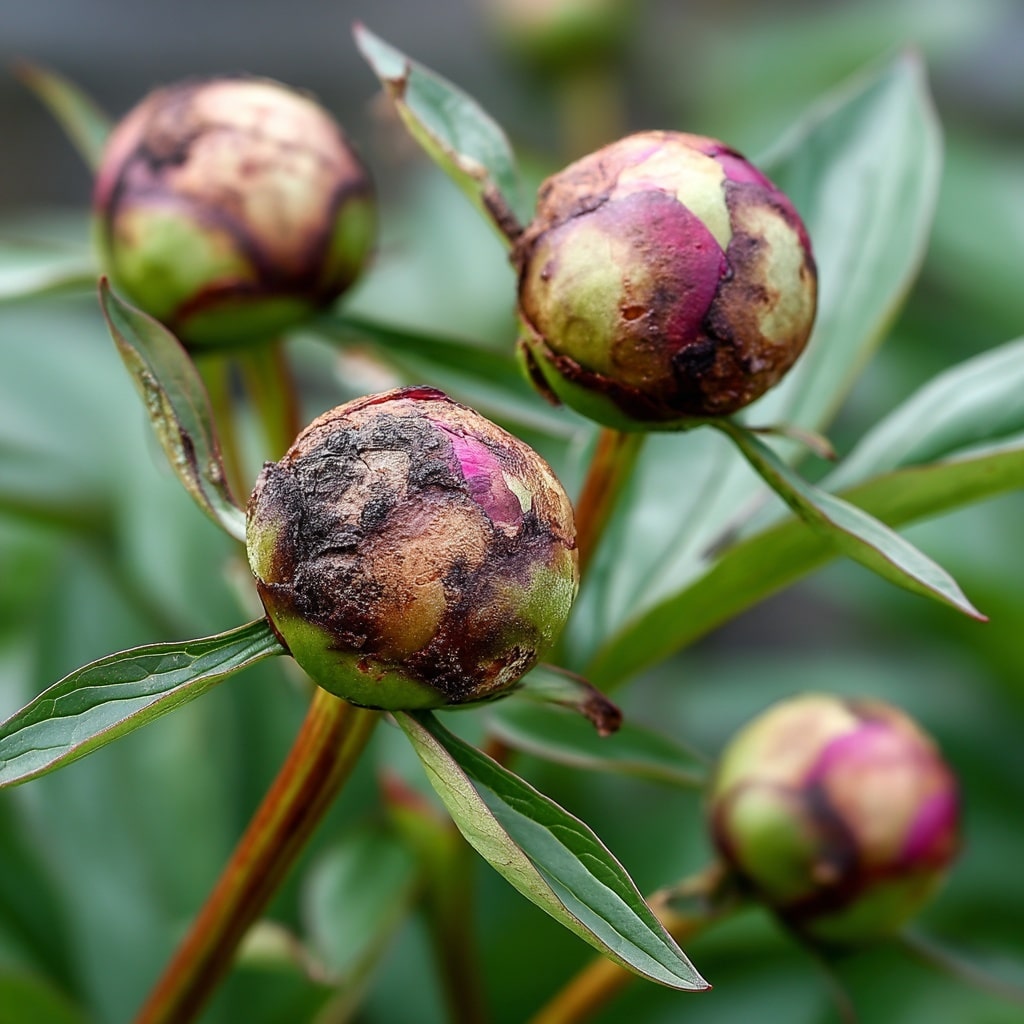
Fungal infections, especially botrytis blight, are a major reason why peonies develop buds that never open. This disease thrives in wet, crowded conditions and usually shows up in spring when moisture levels are high.
If your peony buds feel soft, look grayish, or start to rot before opening, botrytis could be the culprit. This is especially common during the “marshmallow stage”, when buds are full-sized but still soft. Once infected, the outer petals turn brown, and the buds collapse.
To reduce the risk:
- Space plants properly to improve airflow
- Avoid overhead watering
- Prune and dispose of infected foliage in fall
- Use a gentle organic fungicide only if needed
Good sanitation and spacing go a long way in keeping your peonies fungus-free and blooming reliably.
3. Immature Plants

If your peonies are still young, the lack of blooms might simply be due to age. These plants are slow growers that often take 2 to 3 years to establish before producing their first flowers.
In the early stages, your peony is focused on building a strong root system. It may send up leafy shoots, but it won’t form buds until it has enough underground energy reserves. This can be especially true if the root division you planted was small or weak.
There’s no quick fix here—just patience. As long as your plant is healthy and getting proper care, buds will come when it’s ready. By year three or four, most peonies will start blooming regularly.
4. Recently Transplanted or Divided

Peonies don’t take kindly to being disturbed. If you’ve recently transplanted or divided a peony plant, don’t be surprised if it skips blooming for a year or two. This temporary dormancy is completely normal.
Moving a mature plant or dividing a clump places stress on the root system, which needs time to reestablish. Even when replanted correctly, it may take a full growing season—or longer—before the plant feels “at home” enough to produce flowers again.
The best time to transplant or divide peonies is late summer to early fall. Plant them shallowly, avoid fertilizing heavily right away, and give them consistent care. If all goes well, you can expect blooms to return within 1 to 2 years.
5. Not Enough Sunlight
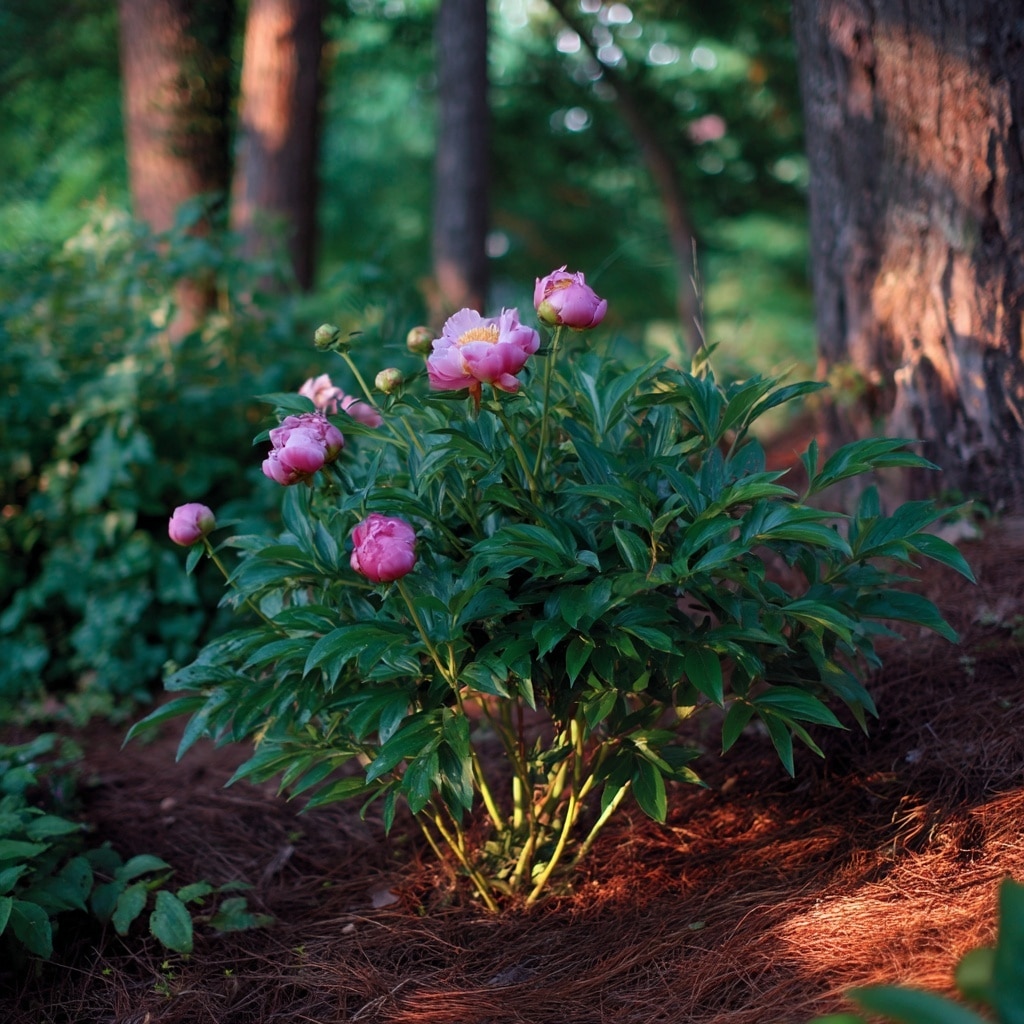
For peonies to bloom, they need full sun—at least 6 to 8 hours of direct sunlight each day. If your plant is growing in partial shade or tucked behind a tree or structure, it may not be getting the light it needs to fuel flower production.
In shady spots, peonies tend to produce spindly stems and lots of leaves but no buds. That’s because without enough sunlight, the plant can’t generate the energy required for blooming.
If you suspect light is the issue:
- Watch how much sun the area gets throughout the day
- Trim back overhanging branches if possible
- Or consider moving the plant to a sunnier location in fall
Sunlight is non-negotiable when it comes to reliable blooming. A sunnier spot can make all the difference in helping your peonies reach their full flowering potential.
6. Frost-Damaged Buds
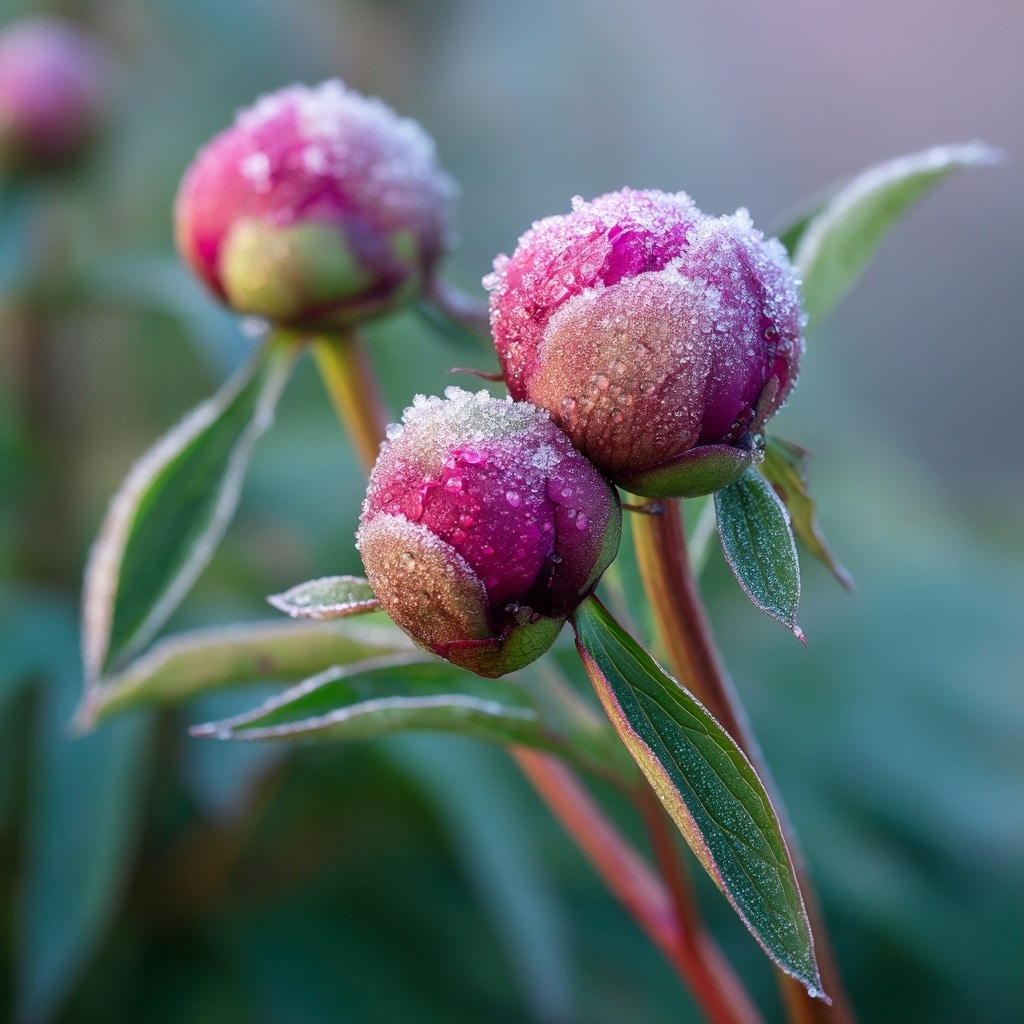
While the roots of peonies are extremely cold-hardy—even surviving temperatures well below zero—their flower buds are much more delicate. A sudden late spring freeze can severely damage developing buds, causing them to shrivel or die before they have a chance to open.
If your plant formed buds that suddenly went limp, blackened, or never grew beyond a certain stage, frost damage may be to blame. This often happens when warm weather arrives early, prompting growth, only to be followed by a cold snap.
To minimize risk in the future:
- Monitor forecasts during bud formation
- Gently cover plants with frost cloth or row cover during unexpected cold nights
- Avoid planting in frost-prone low spots in your garden
Unfortunately, if frost destroys the buds, there’s no fix for that season. But with some simple precautions, you can protect your peonies and preserve future blooms.
7. Wrong Climate or Hardiness Zone
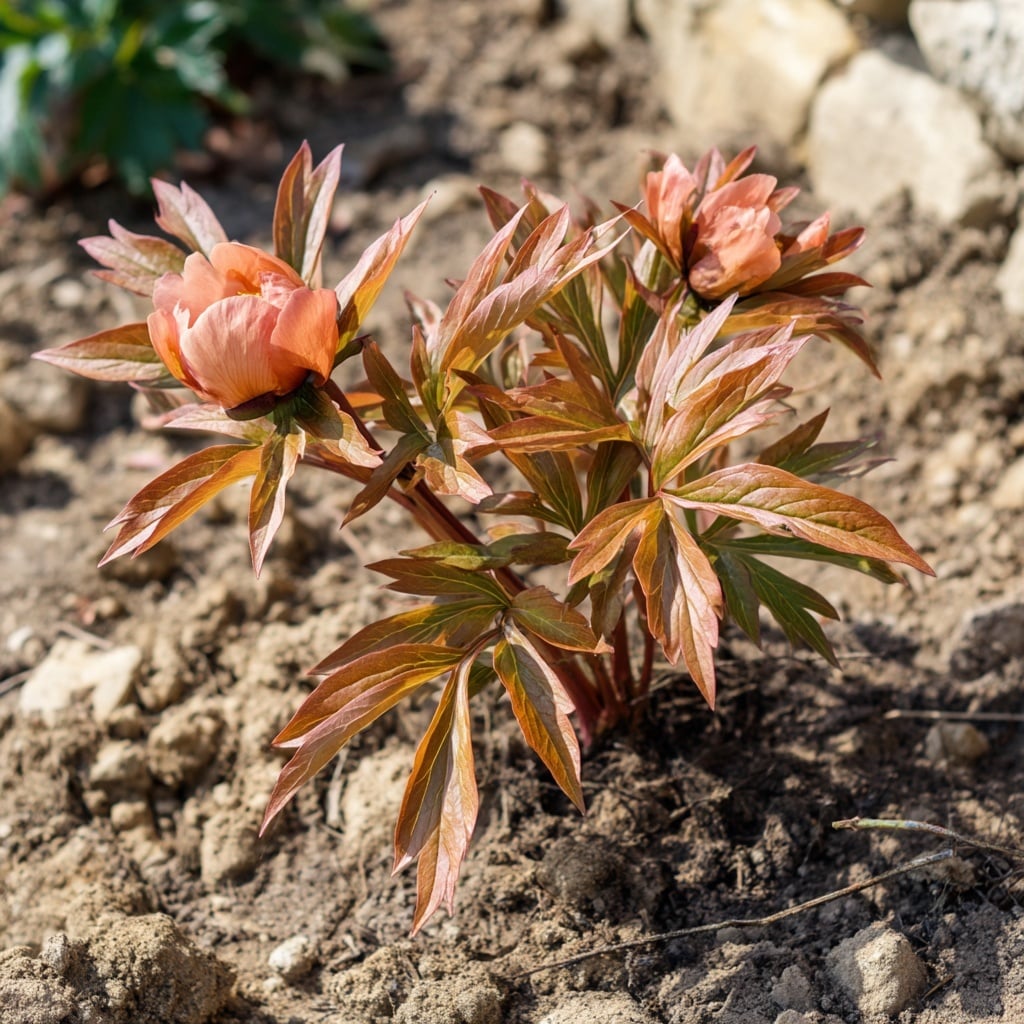
Peonies are cold-loving perennials that require a long winter chill to trigger bud formation in spring. Without enough cold hours—typically between 500 to 1,000 hours below 40°F (4°C)—the plants may survive but never flower.
This is a common issue in warmer USDA zones, especially Zone 8 and above, where winters are too mild to meet the chilling requirement. In these climates, peonies may produce foliage each year but consistently fail to bloom.
What can you do?
- Choose heat-tolerant varieties, such as certain tree peonies or Itoh hybrids
- Plant in the coolest part of your yard, with good air circulation
- In borderline zones, simulate chill by placing peony roots in refrigeration (advanced method)
If you live in a warmer region, choosing the right peony type is key. Without winter chill, even healthy peonies won’t produce those signature blooms.
Final Thoughts
If your peonies didn’t bloom this year, don’t give up. In most cases, the cause is easy to identify—and even easier to fix. Whether it’s planting depth, poor sunlight, young age, or an unexpected frost, peonies are tough plants that bounce back when given the right care.
Take a closer look at your garden’s conditions, make a few strategic adjustments, and with a bit of patience, those iconic blooms will likely return. Year after year, healthy peonies reward gardeners with breathtaking flowers that are well worth the wait.

